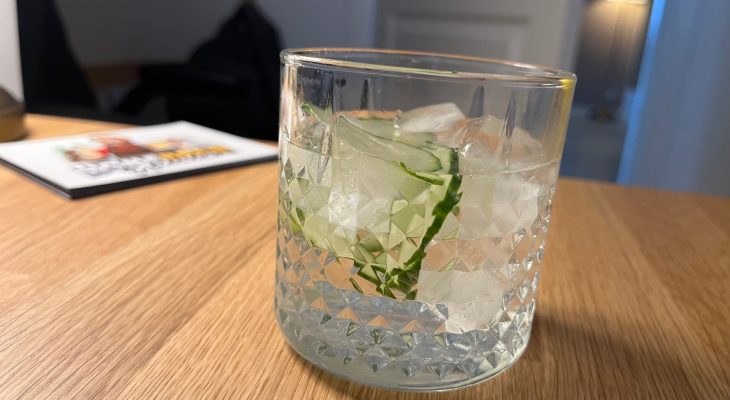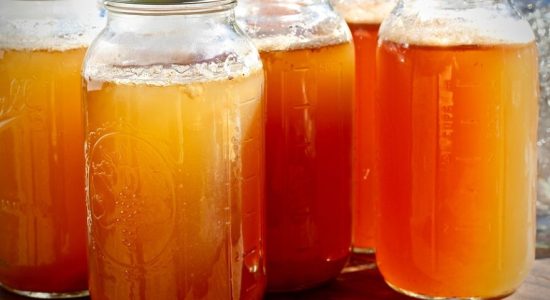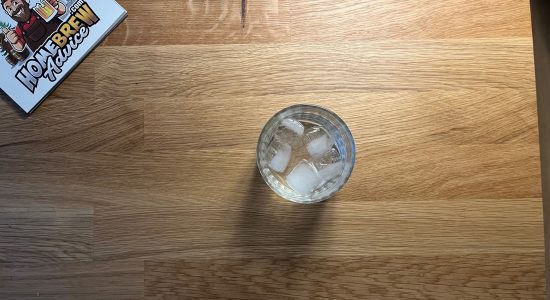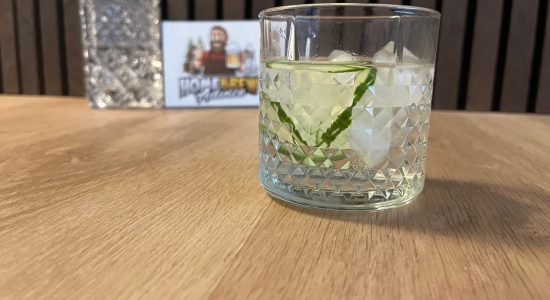What Is the Difference Between Gin and Vodka? » 5 Facts!

Gin and Vodka are some of the world’s most popular spirits. They are two very distinct spirits. Most obviously, Gin is associated with pine and herbal flavors while Vodka is often positioned as odorless and tasteless – Yet the two spirits are still very alike.
I will here explain the Difference between Gin and Vodka in 5 facts!
So, What is the difference between Gin and Vodka? Gin is often associated with herbal and pine notes, while Vodka has best been described as a tasteless entity. Vodka is a neutral spirit made from fermentable ingredients such as grain or fruit that’s distilled or treated to make a spirit without character, aroma, taste or color. Gin, on the other hand, is a spirit that is 40 percent ABV or higher, with its main characteristic flavor derived from juniper berries.
Gin can be made in three different ways. Distilled, redistilled and compound.
In other words, the Difference between Vodka and Gin is the addition of juniper berries to gin.
Keep reading as I dive on the topic and get all the facts straight about these two popular spirits.
Read Also: What Are The Best Moonshine Kits For Homemade Alcohol?
#1 Gin is Essentially Flavored Vodka
It’s easy to think of gin as essentially flavored vodka, and you are not wrong for thinking this.
Both gin and vodka can be made out of just anything, but some common bases are corn, wheat, rye, potato, grapes, and sugar beets. Whatever the primary ingredient is, it is first fermented and then distilled.
This occurs multiple times in order to remove as much flavor as possible. Hereafter water is added to bring the spirit down to around 40 percent ABV, and in the case of gin, this is where it is mixed with juniper and other herbs and spices.
Popular botanicals or agents of flavor for gin often include citrus elements such as lemon or orange peel, as well as a combination of other spices, which may include star anise, dragon eye, coriander, nutmeg, cinnamon.
The different combination of botanical ingredients in the distillation process causes the variations in taste among gin products.
Read Also: How to Make Homemade Vodka?
#2 Vodka is for its own – Gin is not
You most likely have been storing your Vodka in a freezer since your adventures began of drinking alcohol back when you were in high school, but supposedly that is not how it is done.
There is a right temperature to store your vodka in so that when you drink it you get to experience the full bouquet of flavors. That means that if your expensive or inexpensive vodka somehow tastes like the blend of nail polish and sanitizer, you might have been doing it wrong for years
According to Francois Thibault, creator of high-end vodka brand Grey Goose told Business Insider that when you drink high-end Vodka you shouldn’t freeze them, but even enjoying them at room temperature might be too warm as well.
“The best temperature for Grey Goose is 0-4 degrees Celsius”, “Which is a slight dilution with ice in a mixing glass.” Thibault adds.
Sophisticated vodkas should be soft naturally while your cheaper brands could benefit from being frozen due to hiding their more aggressive and burning notes.
On the other hand, gin has been created to be mixed with other drinks, however, as the botanicals come to life in your cocktails and drink and they will add complexity to the drink. This is why so many of the old classic calls for gin, and not vodka.
Source: TheDailyMeal
#3 Gin was Made in Holland, not England
Every living soul might be thinking of England when gin is going on the table, but that is not the right assumption to make since there has been recordings of Holland producing this spirit since the 16th century, and the term Dutch courage might even arrive from soldiers drinking gin before going into battle for its calming effect.
In the 17th century, the Dutch King William of Orange boycotted imports of brandy and as a consequence Genever’s popularity in England became enormous.
in 1690 distilling was legalized and this resulted in a mass production of a juniper based spirit we now know as gin.
The event that transformed gin to what it is today is the diffusion of the improved column still designed by Aeneas Coffrey in 1830.
The new still used more neutral grain alcohol that did not require any sweetening agents, and thus Dry Gin was born. It was first only produced in the city of London, and therefore this style of gin is still referred to today as London Dry.
Gin arrives from the English word genever, which is related to the French word genièvre and the Dutch word jenever, however, they all derive from the word Juniperus, the Latin word for juniper
#4 Vodka and Gin were both used Medicinally
As most spirits, vodka and gin were once used as a medicine to cure different kinds of diseases before the invention of western practices.
Vodka can actually increase your blood flow and circulation in your body which can prevent blood clots, strokes, and other heart diseases. We go more in detail on the benefits of drinking vodka on this article. You can check it out by clicking here.
Gin was used in the middle ages as a form of herbal medicine. The berries used to make gin can help the patient with infection, heart disease, and even help fight kidney and liver disease. It is known that gin was also used as a prevention against the plague. It was said.
#5 There’s a place called Vodka Belt
I am guessing you didn’t know this. There is a place that ranges from the Baltics all the way to Siberia which is called the Vodka Belt. The term vodka belt is used exclusively to the Slavic countries if central and eastern Europe as they are the historical homeland of vodka.
The EU countries of the vodka belt produce over 70% of the EU’s vodka.
Ironically many of the countries belonging in the vodka belt actually prefers beer to vodka, and some countries actually consume more than twice as much beer as vodka (in terms of pure alcohol).
Here is a top 7 of the Best-selling Gin Brands
7: Hendrick’s
6: Larios
5: Seagram’s
4: Beefeater
3: Tanqueray
2: Bombay Sapphire
1: Gordon’s
This list has been made out from a report that analyses spirit brands selling more than one million cases annually.
Source: The Spirit Business
Here is a top 10 of the Best-selling Vodka Brands
10: Soplica
9: Magic Moments
8: Pyat Ozer
7: Svedka
6: Nemiroff
5: Hlibny Dar
4: Zubrówka
3: Khortytsa
2: Absolut
1: Smirnoff
This list has been made out from a report that analysis spirit brands selling more than one million cases annually
Read Also: Best Propane Burner For Homebrewing







